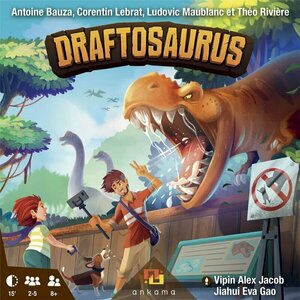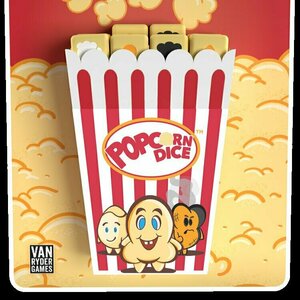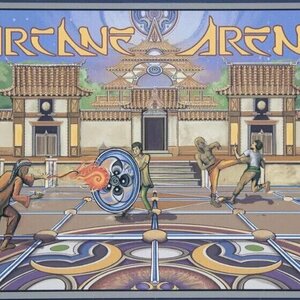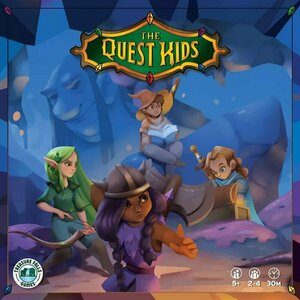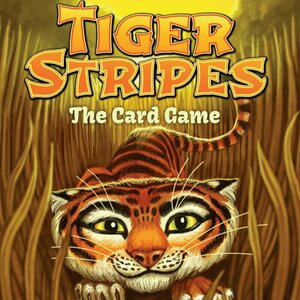
FM Radio PRO - Internet Radio
Music and Entertainment
App
FM Radio app is providing 70,000 + radio stations streaming online 24/7 all over the word. Play...
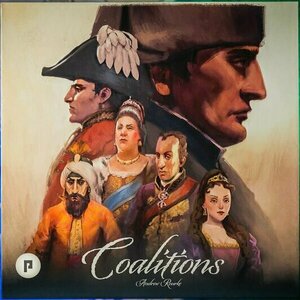
Coalitions
Tabletop Game
Coalitions is based on the series of conflicts known as the Revolutionary and Napoleonic Wars....
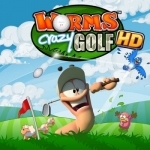
Worms Crazy Golf HD
Games and Entertainment
App
4/4 - “Must Have” - “Terrific fun that mixes classic Worms game play with golf, resulting in a...
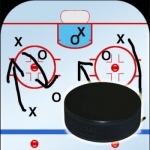
Hockey Strategy Tool
Sports and Utilities
App
Get it NOW for JUST $0.99!!! Hockey Strategy Tool is a fully universal app, compatible with iPod,...
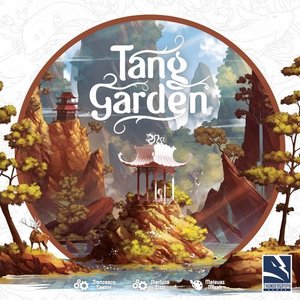
Tang Garden
Tabletop Game
The Tang dynasty was considered the first golden age of the classical and now iconic Chinese...
BoardGames 2018Games ZenGames GardenGames
Purple Phoenix Games (2266 KP) rated Draftosaurus in Tabletop Games
May 14, 2021
Draftosaurus is so appropriately named due to being a drafting game with a dinosaur theme. Instead of typically drafting cards, however, players are drafting adorable little dinomeeples to populate their theme park attractions. Each attraction, or pen in the game, offers different points for having different dinos in each, or the same, or just one, or exactly three, et al. The player with the most points from these pens at the end of the game is the winner!
To setup, every player receives a park board. Populate the draw bag with dinomeeples based on the number of players using the table in the rulebook. Give the wooden placement die to the youngest player and play can begin!
A game of Draftosaurus spans exactly two rounds. Each round is exactly the same: each player grabs six dinomeeples from the bag, active player rolls the die, players draft dinos, players pass the remaining dinos. Repeat these steps starting at die rolling, but the die is passed along with the dinos from the active player. This is repeated until all dinos have been drafted and placed in pens. Easy right?
The true nature of the game and the most fun part is in the placement die and placement of the dinos in the pens. When the die is rolled, this signifies specific placement rules for all players except the active player. So perhaps the die shows that dinos must be placed in the Grasslands, which are the pens on the bottom portion of the boards. Or maybe the die shows that new dinos may only be added to pens that currently have no dinos in them. Again, these rules do not apply to they that rolled the die, but rather every other player. Herein lies the scrumptious struggle: where does one place the dinos they currently possess in their hand from their neighbor? What pens will score the most points at endgame? Can a T.Rex really be appropriate in this pen? The choices can be maddening, or one can play the game with complete laissez-faire and still have a great time. After two rounds the game ends and players look upon their parks with pride as they count up their final scores.
Components. I really only know Ankama from the Krosmaster games, which though I am not really a fan of, the components are great. I believe Ankama has provided excellent components for Draftosaurus. The dinomeeples are all excellently colored and designed. The boards are good quality, though I question the “Grasslands” being brown and kinda devoid of grass. All in all, the components are great and I love handling them and playing with them.
Yes, we always include our scores at the beginning of each review. So you all already know what I’m about to say here. I love this game! I love having so many options available to me, only to have the die roll tell me I can’t do exactly what I want, so I have to alter my strategy on a dime. I love being able to see my dinos filling up the park (or swimming in the River if there are no places for them) and watching them frolic… well, okay not frolic in tight spaced pens. No wonder they all went crazy and escaped in those movies. In any case, if you or your family/friends/playdates enjoy drafting games, but want something a little different, while respecting your playtime (something that many drafting games extend) take a look at Draftosaurus. Even children can get in on the action, as there is no need to be able to read, necessarily. I haven’t yet tried it with my 3-year-old, but I think I will this weekend now. That all said, Purple Phoenix Games gives this one an enthusiastically Triassic 19 / 24. Just keep Newman and Nick Fury away from your game table.
Purple Phoenix Games (2266 KP) rated Popcorn Dice in Tabletop Games
Aug 18, 2021
DISCLAIMER: We were provided a copy of this game for the purposes of this review. This is an advance retail copy of the game, so what you see in these photos is exactly what would be received in your box. For more in depth rules, you may purchase a copy online or from your FLGS. -T
Popcorn Dice is a very light dice chucker where the winner is the player with the most amount of points at the end of the game. Setup could not be simpler: place all the dice in the popcorn bucket and pass it to the starting player. Done. Let’s make some corn!
The active player shakes up the popcorn bucket and then dumps out the dice on the play surface (I would normally use the word “table,” but we have actually played this on many different surfaces). Every die face showing the golden kernel icon is placed back in the bucket: it’s not fully popped yet. All dice showing the single Pop! icon is placed in the player’s score pile to be counted later. Each Burnt dice face showing can be countered with one Double Pop! icon, with both dice being placed back in the cup. If there are no Burnt faces, then the remaining Pop! and Double Pop! dice can be placed in the score pile. However, if at any time four Burnt dice are unable to be canceled with the Double Pop! then the turn is over and ZERO points are scored. Similarly, if no dice (upon a subsequent re-roll) are moved to the score pile, the turn is over, but the player may count up their score pile dice. The active player may continue rolling as many times as they wish or are forced to stop due to unwanted dice rolls. The first player to 30 points signals the end of the game. Every player continues the round so each takes the same number of turns, and the player with the most points wins!
Components. This game is a plastic bucket in the shape of old timey popcorn buckets and a pile of dice. The bucket is nice and very sturdy, and the dice are great! They are big and chunky (like the size of King of Tokyo, if memory serves) and the icons are mostly clear. I say mostly because The Double Pop! and single Pop! icons are white ink on off-white colored dice. They can sometimes be hard to distinguish, especially if playing under less-than-favorable lighting. Other than that, I totally dig the look and style of this game.
When I say that my son and I played this 23 times the first day we received it, I am not at all exaggerating. My kid LOVES Popcorn Dice, and it plays differently from other dice games. I was just expecting this to mimic earlier dice games like Martian Dice and Zombie Dice. Thankfully, this one is lighthearted enough for my children, and still keeps the adults very satisfied. And let me know if you ever accomplish The Perfect Pop.
It is so simple to play, and that’s the beauty of it. I’m talking 10 minutes with toddlers. When you need something super quick and easy, and maybe to bring in absolute gaming beginners, you cannot lose with Popcorn Dice. Have some youngsters tagging along with their parents to game night? Show them Popcorn Dice and watch them be entertained nearly the entire night trying to pop the best batch of corny goodness. If you need that one little game in your collection that can work in many many different scenarios, then consider adding Popcorn Dice to your collection. Grab your copy here: Popcorn Dice from Van Ryder Games.
Purple Phoenix Games (2266 KP) rated Arcane Arena in Tabletop Games
Jan 23, 2021
Arcane Arena is an arena-style fighting card game. In it players will take on the mantle of a warrior competing in this brutal last-man-standing battle royale. They will need to train and learn new techniques and then show their opponents all they have learned. The game takes place over three rounds of increasing actions and, truly, the last warrior standing will be crowned Champion!
DISCLAIMER: We were provided a prototype copy of this game for the purposes of this review. These are preview copy components, and I do not know for sure if the final components will be any different from these shown. Also, it is not my intention to detail every rule in the game, as there are just too many. You are invited to download the rulebook, back the game through the Kickstarter campaign, or through any retailers stocking it after fulfillment. -T
To setup, refer to the rules to deal each player their starting deck of Buy, Move, and Attack cards. Remove all Focus and Wound cards and make a stack for each on the side of the play area. Shuffle the remaining “Trainer” cards and create a market of six cards to be purchased. Set the arena board on the table and populate it with player tokens and Favor tokens (glass beads in this prototype). Each player shuffles their starting deck and draws four cards to create their starting hand. The tournament is now prepared for warriors.
Arcane Arena features three rounds of two phases each. The first round has players limited to three turns during the first training phase and 10 hit points for the second phase of the game.
The first phase of each round is the Training Phase. During this phase players are able to use their four cards “as a buy” for their purchasing power. The player lays a card, announces it is as a buy, tallies the currency to be spent, and then purchases a card from the collection of six cards in the offer or one Focus card from its stack. Once completed with their Training Phase, the player will restock the trainer pool of cards for purchase. It is then the next player’s turn to complete their Training Phase.
Once all players have had their Training Phase, the Combat Phase begins with the active player. The active player must play cards for either their Move, Effect, or Attack keywords. Each card will instruct the player the amount of Move they can use, which Effect can be used and how, and how many Attack points of damage they inflict on a target within range.
Play continues in this fashion with each player playing as many cards from their hand of four as they wish until only one player remains with hit points. If it is the third such round of Combat Phase (5 turns at the Training Phase and 20 HP during Combat) then the last player standing is the winner!
Components. Again, this is a prototype copy of the game, so some components will be different from the finished version. That said, this game has decent components planned and the art style is interesting, with hints of a more ancient style. The iconography on the cards is okay: I did find myself trying to figure out what the icon for “purchase” actually was, so it threw me off a couple times. Similarly, the effect bar on the card is very small and can easily be overlooked if the players are not constantly checking for that bar for information.
Gameplay for Arcane Arena is something with which I am struggling to describe. I have always been poor with arena-style games that have players moving around and attacking. It is so difficult for me to abandon my Barbarian-style of just blocking movement and wailing on a stationary enemy. Once movement is expected I am a fish out of water. That is not at all a knock on Arcane Arena, but on my style of play. However, if I belong to a group of gamers with similar style be warned: there’s a lot of opportunity for movement here and it may be uncomfortable at first.
I do like the theme of the game and its implementation. I can understand the premise and relate it to the gameplay. I like that it is split between two distinct phases and having cards with multiple usage is a positive for me. I also enjoy that every time a new phase begins all players combine their cards, shuffle, and draw a hand of four cards. This is new for me, as in typical deckbuilders the card just purchased usually goes directly into the discard pile only to be drawn on much later turns. Such is not with this one. A card just purchased may be drawn immediately in the next Combat Phase, depending on luck of the shuffle and draw.
So while I do not enjoy the moving around the arena aspect of the game, all else is good for me. If you are similar to me I would say give it a shot, but it may be difficult to be successful if, like me, you plan to be a stalwart rock instead of a nimble wisp. If Arcane Arena sounds like your cup of tea, do check it out when it comes available!
Purple Phoenix Games (2266 KP) rated The Quest Kids in Tabletop Games
Mar 26, 2021
The Quest Kids is a dungeon crawler style board game for players as young as five years of age. Yes, FIVE! In it, players are acting as one of these Quest Kids, attempting to explore the cave of Tolk the Wise. The Quest Kids will find abilities to enhance their own, treasures to collect, and silly bad guys to scare away within, and the player with the most stars (VP) at the end will win the game!
DISCLAIMER: We were provided a copy of this game for the purposes of this review. This is a retail copy of the game, so what you see in these photos is exactly what would be received in your box. I do not intend to cover every single rule included in the rulebook, but will describe the overall game flow and major rule set so that our readers may get a sense of how the game plays. For more in depth rules, you may purchase a copy from the publisher online or from your FLGS. -T
To setup, place the large game board on the table and populate it with the green, gray, and red Dungeon Tiles according to the rules. Also prepare the card decks and place them appropriately in their spaces on the board. The Treasure Tokens are placed in the Treasure Bag. Each player will receive one Quest Kid Player Mat and matching figurine. In addition each player will receive three starting Health Cards, one Quest Card, and one appropriate starting Ability Card. The game may now begin from the entrance to the cave!
On a turn players will be able to have free movement around the board exploring tiles and resolving them in turns. Green tiles are always good for the players, Gray tiles may have some bad guys but are predominantly good, and Red tiles are littered with those silly bad guys that will need to be scared away. A player will travel to a board location and encounter a Dungeon Tile by flipping it over and collecting the resources shown or attempting to scare away the bad guys. Bad guys can be scared by discarding the printed Ability Cards on their tile. Once discarded, the player collects the tile to their Player Mat for stars at game end.
Sometimes players will encounter a bad guy they do not possess enough Ability Cards to scare away. In these scenarios the player may ask the other players for help. Nonactive players may then offer Ability Cards from their stash in order to help achieve the goal. For every Ability Card donated to the cause the donating Quest Kid will receive one Kind Kid Card. Kind Kid Cards are always great and can be resolved at ANY time during the game. Should a player encounter a bad guy they cannot scare away and other Quest Kids cannot help with Ability Cards, the active player will suffer a loss of one of their Health Cards (worth two stars).
Some tiles or Quest cards will instruct the player to draw one or more treasures from the Treasure Bag. Most treasures are good and provide stars, but some are blobs that eat stars. Each Treasure Token also has two values. The top value is for the normal amount of stars. However, the bottom value is worth more stars if the controlling player matches the Quest Kid printed on the token. Some treasure may be worth just one star unless the Quest Kid is a match, in which case it is then worth three stars, for example.
Turns continue in this fashion until all Dungeon Tiles have been resolved or a stalemate reached. At this point all players count up their stars they have collected from various sources and the player with the most stars is the winner!
Components. This is a kids’ game, can we all agree? THIS kids’ game, however, boasts some of the most interesting and wonderful components I have seen. The board is huge and depicts a magical cave. Super cool. The tiles are easy to read and understand, as with all the iconography. The Quest Kids themselves all have the same abilities (unless the expansion is added – and the review for that is coming soon), so that smaller children are not burdened with having to remember their special abilities. There are these plastic Tolk Gems that can be collected during the game and children absolutely flip for these things. And did you see those colorful and very big minis? I mean, come on! It’s a kids’ game! They LOVE minis! The game also comes with cardboard standees in case your children cannot handle the minis carefully enough.
Here is the deal. I absolutely adore these Quest Kids games. They are absolutely the perfect difficulty for young gamers who are ready to step up from the Candy Lands and Chutes & Ladders. Now, the box suggests 5+ but my 4-year-old did just fine with it, so take that with a grain of salt. Having had him already familiarize himself with The Quest Kids characters in The Quest Kids: Matching Adventure, this was an easier process getting this game to the table for us.
The game gives an exciting dungeon crawl experience for younger children, and it’s honestly something I never really knew I needed in my life until I now have it. It is so simple to teach and play and definitely encourages helping other players, if even just because you receive those Kind Kid cards in return. Anything to create that helpful player atmosphere to prepare them for heavier cooperative games is much appreciated.
Please do not misunderstand me. The Quest Kids is targeting younger players, but I do believe that any aged gamer could appreciate and have a good time with this. It certainly will not fill the void of other dungeon crawlers, but if you need a fix and would like to spend 20-45 minutes playing something to scratch that itch, then pull out your copy of The Quest Kids. It is super-light, colorful, and is a perfect stepping stone to bigger cooperative games. Purple Phoenix Games (with special guest Finley) gives this one a Kind 11/12. Please visit the publisher’s website to pick up your copy, and have a great time introducing your children (or partners, in-laws, grannies, pets, whomever) to cooperative dungeon crawls that will have you leaving the table in a much better mood than when you sat down.
Purple Phoenix Games (2266 KP) rated Tiger Stripes in Tabletop Games
Nov 25, 2021
Tiger Stripes is a set collection, hand management, drafting game for two to four players. In it, players are young tiger cubs just earning their stripes (a fact I did not know prior to playing: that tiger cubs aren’t born with stripes). Each cub will earn their stripes by drafting the best available cards and utilizing them to the fullest in order to collect sets of prey.
Oh fact check: tigers are born with stripes already, so this game is not based fully on facts.
DISCLAIMER: We were provided a copy of this game for the purposes of this review. This is a retail copy of the game (I think), so what you see in these photos is probably what would be received in your box. I do not intend to cover every single rule included in the rulebook, but will describe the overall game flow and major rule set so that our readers may get a sense of how the game plays. For more in depth rules, you may purchase a copy online or from your FLGS. -T
To setup, each player will choose their tiger avatar cards and also receive seven Stripe tokens. The card deck is shuffled, and each player is dealt two cards for the starting hand. The remainder of the deck is placed on the table as a draw deck, but five cards are dealt to the table as an offer row. The youngest player goes first, and the stripes are ready to be earned, like Boy Scout badges… but for ferocious tiger cubs.
Turns are taken in three steps. The player must make a choice of one action for the first step of their turn: Draw a card, Take a tiger card, or Capture Prey. A player may choose to blindly draw a card from the top of the deck and add it to their hand as their action. Alternately, the player may instead choose to take a tiger card from the offer row and add it to their hand. Both of these are self-explanatory.
The third action that can be taken is to Capture Prey. A tiger may capture prey from the offer row by discarding cards from their hand with matching symbols to their target cards they wish to capture. Each card in Tiger Stripes has one or more symbols printed in the upper left hand corner. By discarding cards from hand to the discard pile, a player may use all the symbols provided by these cards to match with cards’ symbols from the offer row. For example, a player may discard two tiger cards and a snake card, noting the symbols now provided. By using the purchasing power of these symbols, the player may then draft cards from the offer row by paying their cost in symbols. It is entirely possible for a player to be able to draft cards from hand in order to purchase all available cards in the offer row to be added to their hand. An explanation of the significance of this is coming.
The second step of a turn is mandatory only if the prerequisites are met: every set of three like cards in hand are discarded in return for Stripe Tokens. So, for every set of three matching monkey, snake, deer, and boar, the player will receive one, two, three, or four Stripe Tokens to be added to their avatar card, respectively, with any tiger cards discarded to be treated as wild cards to complete a set. Therefore, a player may wish to purchase all cards from the offer row in an attempt to score multiple sets during this second step to earn as many stripes as possible.
Finally, the third step of the turn is to Replenish the Jungle (the offer row). For any cards drafted in the turn, the player will replace with cards from the draw deck to setup the next player’s turn.
Play continues in this fashion of grabbing cards, discarding cards, and scoring sets for stripes until one player has earned their seventh stripe and won the game!
Components. This game is a deck of cards and a bunch of Stripe Tokens. The cards are all nice quality, with linen finish, but are a bit on the thinner side as far as flimsiness is concerned. I think if players are all somewhat careful this will not pose problems. If so, consider sleeving your copy. The Stripe Tokens are oblong octagons with stripey art. Speaking of the art, throughout the game the art is very cute and cuddly… except for the boar. He is crotchety. I do enjoy finding the stalking tiger somewhat hidden on each card’s art. A great nod to the noble tiger’s hunting ability.
Now, as I was typing the rules breakdown I felt like I was typing quite a lot for as light as the game actually is. In fact, though it says on the box that it is intended for ages 7+ I just couldn’t leave out my little 5-year-old gamer son. He grasped the rules really well, and though he hasn’t developed the best strategy-focused brain skills yet, he is still able to play and enjoy Tiger Stripes. In actuality, he and I had a blast playing through this several times. Yes, it is a resource optimization card drafting game, but to him, it was more like procuring a veritable zoo of cute animals that then offered his tiger the stripes needed to win. And win he did. Several times. This certainly isn’t a game of high strategy and multiple-minute turns, but rather a quick and easy card game with a great little theme.
Is the designer, Isabel duBarry, a relative of the great Philip duBarry? Perhaps. And that is a great thing, because one of our favorite games across the board is Revolution! Perchance game design just runs in the family. I am not sure, so maybe someone can chime in on this here.
When my son adds a game to his rotation, that is a sign of a great little game for us. He has added Tiger Stripes to this rotation and we will be playing the mess out of it here over the next several weeks/months. While this is by no means a gamer’s game, it is absolutely perfect for a game day with kids. My child loves it, and I quite enjoy playing as a tiny tiger out on the prowl for their stripes. If you have littles at home, parents who haven’t quite converted fully into game partners, or newbies you are inviting into the hobby, Tiger Stripes is a good little game to get the party started. It’s quick, easy, features great art and theme, and introduces simple mechanics to hook people on gaming. Go grab a copy and just keep it in your back pocket for those times you need something like this for that one special group in front of you.
